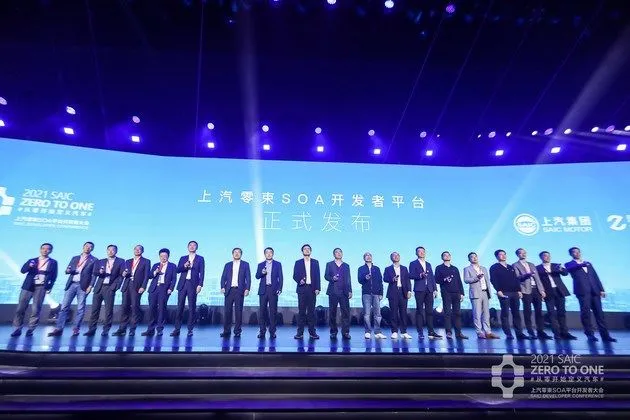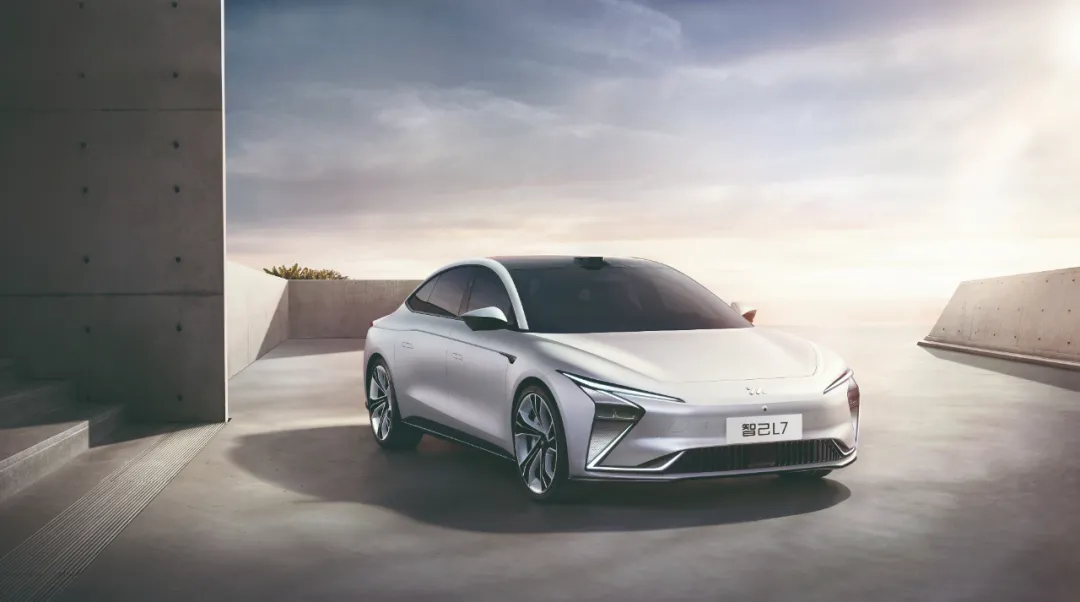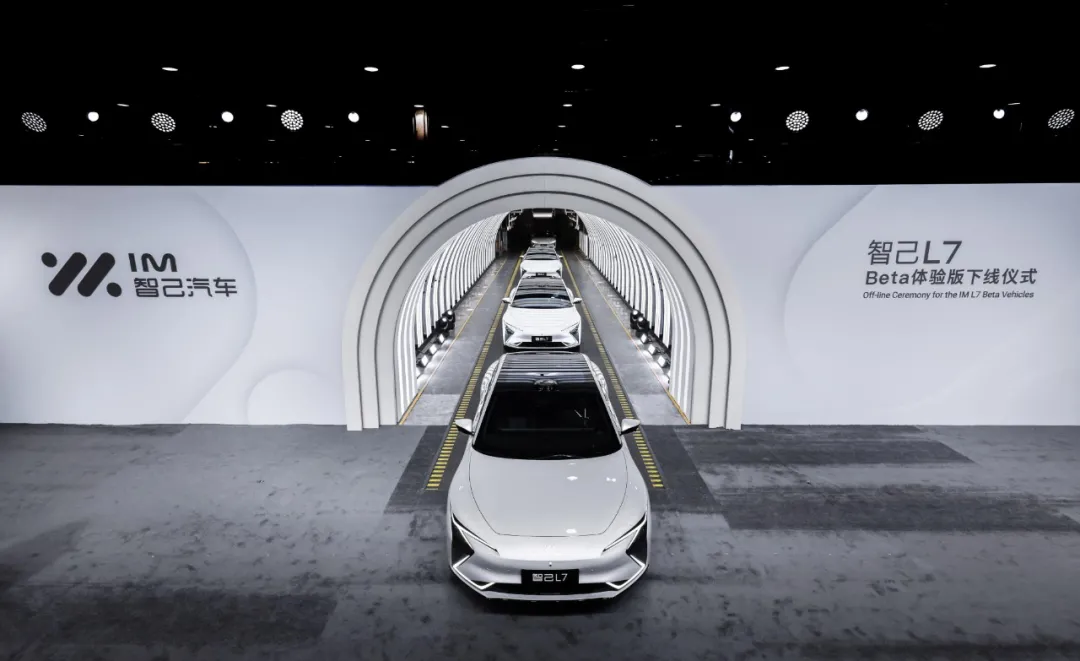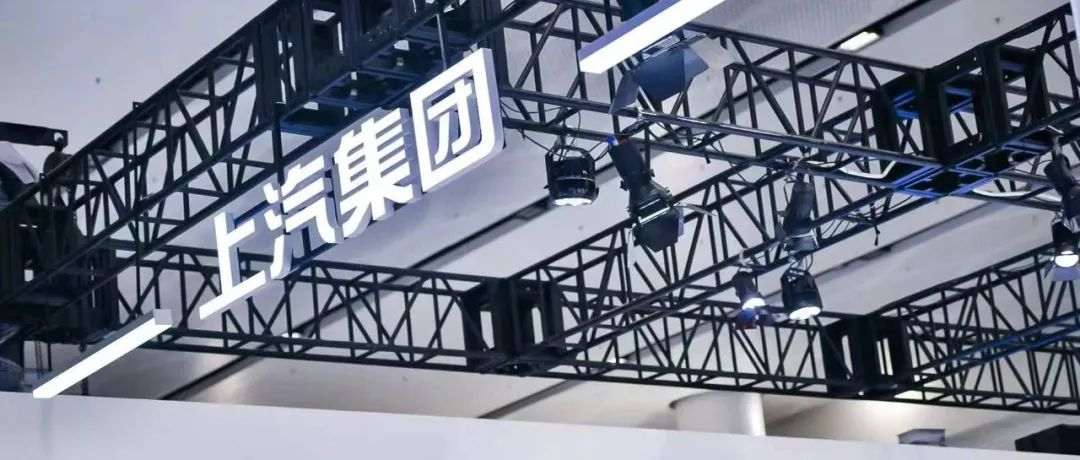The Transformation of SAIC Group: Steady Start, Progress and Innovation
As a media platform under the Outing BaiRen Group, we focus on the evolution of the automobile travel industry chain.
Author: Zhou Pei
If there is one word to summarize SAIC Group in 2021, it is “Reshaping”.
Reshaping oneself is a very painful process, especially for SAIC Group, the top-ranked domestic automotive manufacturer.
With the evolution of intelligence trend, the new car-making force has changed many impossibilities in the Chinese automotive industry. At the same time, the changes of the era have brought unavoidable impact to the traditional automotive groups that have stood on the top of the automotive industry for many years, and SAIC Group is no exception.
It is said that it is difficult for a big ship to turn around, but it is necessary to change direction.
On June 11, 2021, at the SAIC Group Investor Communication Meeting, Chairman Chen Hong announced the new vision, mission, values and logo of SAIC Group publicly, and announced the new generation of electric intelligent vehicles that are closely centered on the user through deepening innovative development strategy and all-around pushing forward “data determines experience, software defines automobile” transformation, which is transforming SAIC Group into a user-oriented high-tech enterprise that upgrades its technology, globalizes its business, upgrades its brand to high-end and enhances its user experience.
The charge has already begun.
Now, both traditional automakers and new forces, although with different technical reserves and capital strengths, mostly stand on the same starting line, and they are all crossing the river by feeling for stones. Who will raise the banner of the future leader?
In the past year, SAIC Group has given its answer from thinking and action.
Results Are Not the Ultimate Goal
If there is one most important change in SAIC Group’s thinking to choose, it is that “sales volume is not the ultimate goal”.
In fact, for enterprises in the process of transformation, the consideration of performance is often an obstacle. It is even more difficult for an automotive group that has occupied the top sales volume in China for many years to abandon the obsession with “sales volume” from top to bottom. Without a unified and stable thinking paradigm, the swing of transformation will be caused by the obsession with performance.
To a large extent, as the helmsman of SAIC, Chen Hong’s firmness is also affecting the transformation path of SAIC Group, whether it can emerge from the pains of transformation and grow stronger.
For SAIC Group in 2021, it can be summarized as “Steady Start, Progress, and Innovation”.
For Chen Hong, it is not easy to steer the SAIC Group. It is necessary to keep up with the pace of industry change and maintain the stability of the basic plate. From the transcript, it is good: the stability during the transformation period of SAIC Group is evident on paper.
According to the 2021 production and sales data released on January 7th, the Group’s wholesale sales of complete vehicles reached 5.464 million units (over 5.81 million units delivered to end-customers, a year-over-year increase of 5.5%), maintaining the top position in the domestic market for 16 consecutive years.
Data shows that in 2021, SAIC’s self-owned brands sold 2.857 million units (including Roewe and MG brand’s total sales of about 800,000 units), accounting for 52.3% of total sales, exceeding 50% for the first time. At the same time, SAIC Group sold 697,000 units in overseas markets (including exports of 598,000 units and domestic sales of 99,000 units from overseas bases), with a year-over-year increase of 78.9%, maintaining the top position in the domestic automotive industry for six consecutive years, with products and services entering more than 70 countries and regions around the world.
In the eyes of AutocarMax, SAIC has entered a period of transformation and breakthrough, and whether it can persist in its transformation goals for the long term remains to be seen. Because, as long as there is competition, there will be disputes, rankings, and compromises.
As the helmsman, Chen Hong is at the forefront of these changes. “Stay calm and do what you need to do,” he said in 2019, having realized that “the era when any car could be sold is over” as uncertainty increases.
In recent years, SAIC Group has been looking for new paths and new thinking while also “dealing with uncertainty.” As Chen Hong said, “we must firmly establish bottom line thinking and disaster consciousness, continuously enhance our understanding of the regularity of responding to risk challenges, and thus better and faster ‘seize opportunities and overcome dangers.'”
The key to “seizing opportunities and overcoming difficulties” is not only to hold onto and revitalize the “capital,” but also to improve the “ability” to seize opportunities and develop innovations.
However, the turning of the elephant requires time and patience. From brand strategy, market insight, to product layout… Each step is a huge challenge and not an easy task. How can SAIC balance them?
The elephant cannot simply sit down.
Chen Hong’s tag for SAIC Group in 2021 is that breakthroughs have been made in the key projects of the “electric intelligent network connectivity” new track. The goal is to “technologically leap and transform comprehensively into a high-tech enterprise.”
The soul is in one’s own hands.
Let’s first discuss a case related to SAIC.
On June 30, 2021, an investor asked whether SAIC would consider cooperating with third-party companies such as Huawei in the field of autonomous driving. Chen Hong did not evade the question, but responded positively.“`
“Cooperating with third-party companies like Huawei on autonomous driving is unacceptable to SAIC. It’s like having a company provide us with a complete solution, which would make them the soul and SAIC the body,” he said. “SAIC needs to hold the soul.”
For a time, the “soul theory” sparked much discussion within the industry and even became a must-answer question for every company in the automotive industry chain facing the media.
In fact, after Chen Hong finished this passage, there was another passage that was ignored by public opinion. “SAIC Group has many collaborations with Baidu and Huawei. There are also many collaborative projects with Huawei in terms of 5G and the internet ecosystem. ‘We’ are very familiar with Huawei.”
As early as the end of 2018, SAIC signed a strategic cooperation agreement with Huawei, in which the two sides will launch comprehensive strategic cooperation for “electrification, intelligent networking, sharing, and globalization” of automobiles. In April 2021, Huawei representatives appeared at the SAIC Zero Bunch SOA platform developer conference.
This case has been more than half a year old, and the AutocarMax has always believed that for SAIC and Chen Hong, the “soul theory” is by no means a gimmick, nor is it to be self-enclosed, but rather reflects their determination and confidence in “mastering core technology”.
In fact, since Chen Hong became the head of SAIC Group in 2014, in addition to proposing to do a good job of independent brands, he defined “electrification, intelligent networking, sharing, and globalization” as SAIC’s “new four modernizations” strategy.
Looking back, “intelligent networking” is an important part of SAIC’s “soul.”
In fact, since putting forward the “new four modernizations” strategy, the SAIC Group has made deep layouts in technology, business models, and external collaborations.
By 2021, SAIC’s transformation path has become increasingly clear-“establishing technological advantages and fully transforming into a user-oriented high-tech company” is the goal; accumulating technology and exchanging thin products is the method.
However, although SAIC’s technical reserves have formed pearls one by one, they have not yet strung them into a pearl necklace.
In the view of AutocarMax, IM Auto is the rope that strings up this string of pearls.
From being seen as the “No. 1 project” within the company to being formally registered and established, and to the delivery of the first batch of beta test versions, IM Auto has created the “IM speed” of high-end smart electric vehicle development in just 22 months.”

“`As the string that connects pearls, IM Auto is facing the biggest challenge of “embracing innovation”, a synthetic development of platform + three electric systems + software + power, and it is far from being a simple refreshment of car models. However, these “non-simple” elements have formed a closed loop in the IM L7.
IM Brand defines the 22 months of “super development” as “doing difficult and right things”, which is consistent with SAIC’s transformation strategy.

With the offline delivery of the IM L7, a “development chain” for innovative technology implementation, user product delivery, data-driven iterative improvement and mature application popularization of intelligent electric vehicles is forming within the SAIC Group. As Chen Hong said, the offline delivery of IM Auto is not only a milestone but also a breakthrough.
For example, the “user-oriented data-driven technology company” FeiVan Auto is accelerating the expansion into the mid-to-high-end intelligent electric vehicle market, and is running in parallel with the newly-built IM Brand. Meanwhile, Roewe, MG, and SAIC-GM-Wuling, which created the “Wuling Phenomenon”, are making progress in this transformation together.
SAIC’s joint venture is also attempts to break into this transformation. The new energy team is a completely independent team and does not follow the traditional marketing route. SAIC-Volkswagen has successively released ID. series pure electric vehicle models, while SAIC-GM has also separated the new energy business from its main business and adopted a new model based on the Otera electric vehicle platform.
Sales data shows that SAIC Group’s new energy vehicles sold 733,000 vehicles, an increase of 128.9% YoY, ranking first in China and second globally. In developed countries and regions such as Europe, Australia and New Zealand, domestic brands MG and MAXUS have sold more than 50,000 new energy vehicles.
At a time when major brands are making efforts to enter the new energy market, SAIC is also focusing on upgrading new energy technology to address user pain points. Targeting the “safety anxiety, charging anxiety and economy” of electric vehicle users, the new generation of power battery system from SAIC has zero heat loss, high cost-effectiveness, fast charging, swapping and upgrading, and has been put into formal production recently.
Transformation is still ongoing.
Wang Xiaoqiu, President of SAIC Group, believes that “in the process of transforming and embracing new opportunities, the biggest change for SAIC is not only the improvement of product technology, but also the transformation of market awareness and user thinking.”
For example, IM Auto will share 4.9% equity returns from its founding round of investment with users. The first 200 units of the IM L7 Beta test version will be delivered to real users recruited from angel round and A round users for testing and evaluation even before the official launch, demonstrating its user-oriented approach.
 # A User-Centric Data-Driven Automotive Technology Company: SAIC Feiji Automobile
# A User-Centric Data-Driven Automotive Technology Company: SAIC Feiji Automobile
SAIC Feiji Automobile not only provides customized products with software and hardware options for customers, but also brings innovative online and offline activity experiences for user communities while offering value-added services such as battery leasing and OTA software subscriptions.
In terms of brand operation, SAIC employees experience different and fresh changes every day, but this is not the end of SAIC’s “smart manufacturing” journey, but rather the starting point for self-iteration and communication with users.
After years of research and development and the introduction of multiple vehicle models, SAIC has accumulated a wealth of reserves in the three-electricity technology and independently developed core software that is gradually being implemented in new products.
For example, the intelligent driving solutions for Smart L7 and Feiji R7 include high-end laser radar, full-stack proprietary software platform and centralized electronic architecture, as well as a large number of technological innovations such as full-domain integration on cloud, mobile, vehicle, and intelligent hardware.
Moreover, SAIC’s L4-level Robotaxi has landed in Shanghai and Suzhou in large batches, and will also arrive in Shenzhen this year. By 2025, SAIC will achieve large-scale production of L4-level intelligent driving cars and establish a commercial Robotaxi fleet, defining a new business model for shared travel and realizing sustainable and profitable commercialization.
Currently, SAIC is deploying comprehensive layouts for its five major centers in software development, big data, artificial intelligence, cloud computing, and network security.
In April 2021, SAIC took the lead in hosting the world’s first auto SOA developer conference SAIC Zeros SOA platform developer conference, reaching a consensus with tens of ecosystem partners including Baidu, Alibaba, Tencent, Huawei, and other leading tech and internet companies, to conduct extensive collaborations focused on intelligent Internet connectivity, network security, 5G, and automobile chips.
In addition, SAIC has nurtured 20 “sci-tech SMEs” such as Jiehao Tech, SmartCar, Feiji Auto, ZeroTech, SmartRoad, Saikewei, and Lianchuang Electronics, enabling industrial transformation and upgrading through technological innovation, and actively promoting the industrialization and commercialization of such innovative achievements with the help of the capital market.
For example, Jiehao Tech has launched the new Jiehao Qi yuan series fuel cell system, with core technical indicators such as fuel cell power, fuel cell power density, and system power comparable to the world’s top level represented by Toyota, and has initiated a spin-off as the first “sci-tech SME” under SAIC to go public.
In recent years, SAIC has also taken active actions in the capital market to empower technological innovation through industrial investment.
It is worth mentioning that SAIC Motor has pioneered a strategic direct investment business model featuring “production-investment linkage, top-down linkage, and internal-external linkage,” focusing on strategic areas such as new energy and intelligent connectivity, and continuously increasing its direct investment efforts in innovative fields. SAIC has invested in several star enterprises, such as CATL, Horizon Robotics, Qitao Technology, Momenta, and eight companies like Farasis Energy and East Hope Group have successfully gone public in 2021.
As of now, the first-level market investment assets of SAIC Group have reached CNY 42 billion, ranking among the forefront of domestic automobile and industrial groups.
Some people pursue novelty, some cherish tradition, while others emphasize the “just right” balance.
For SAIC, it is the pursuit of comprehensive balance. Chen Hong stated that “in the future, SAIC will continue to maintain the determination for strategic innovation, increase investment, intensify breakthroughs, and continuously enhance its core competitiveness.”
Between ideological changes, SAIC’s transformation path has become clear: on the one hand, it strengthens the “technological foundation” to support the construction of differentiated product services; on the other hand, it uses technological innovation to lead corporate changes and create differentiated overall competitive advantages.
This is a “smooth start, steady progress, and emerging new changes” new SAIC.
This article is a translation by ChatGPT of a Chinese report from 42HOW. If you have any questions about it, please email bd@42how.com.
